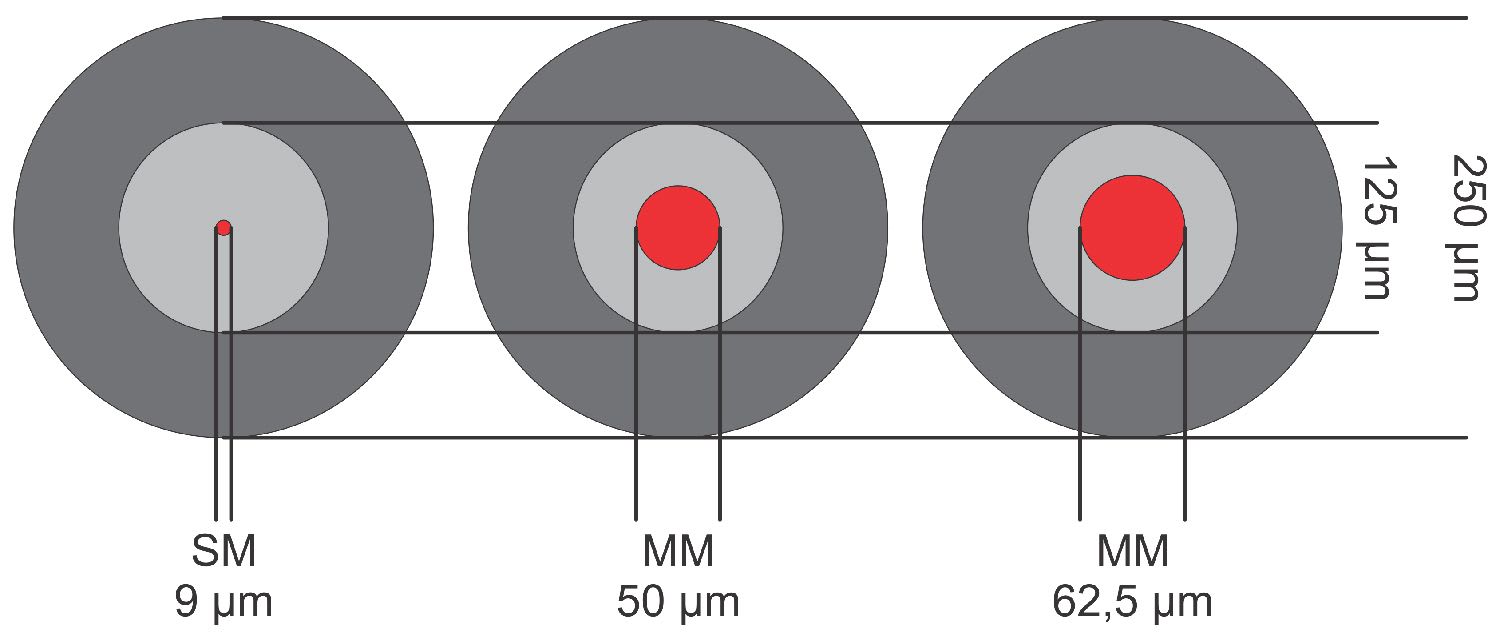The structure of a fiber optic cable is the same for both single mode and multimode. The fiber consists of two parts, a core and a cladding, both made of glass. These two parts are doped with substances that give them slightly different properties (refractive index). This allows light to stay confined within the fiber, as long as it is not bent too sharply. A primary coating of plastic is applied to the fiber for protection.
Multimode fiber has a core diameter of either 62.5 micrometers (µm) or 50 micrometers. Single mode fiber has a core diameter of 9 micrometers.




